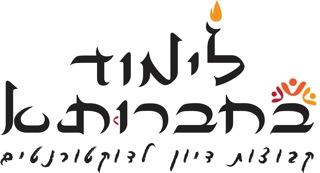תיאור הקבוצה
התרבות האנושית רוויה סמלים בכל רבדיה. בני אדם נזקקים לסמלים מסוגים שונים על מנת לייצג אובייקטים או לבטא רעיונות, חוויות או רגשות. יחד עם זאת, על אף ש'הסמל' הוא מושג מפתח שאנו מדברים עליו בהקשרים רבים, יש סביבו אי בהירות ולא תמיד ברור שאנחנו יודעים למה אנחנו מתכוונים. בהקשר של מערכות דתיות, לא תמיד ברור היכן עובר הגבול בין הממשי לסמלי, וכיצד מכריעים האם אלמנטים של תופעה נבואית, פולחנית או טקסית מסוימת הם 'הדבר עצמו' או רק ייצוג שלו. כך לדוגמה, כבר בעת העתיקה שאלו את עצמם נוצרים, מוסלמים ויהודים שאלות כגון: האם טקס כמו ברית המילה או המיסה הוא ביטוי למחויבות בלבד, או שבמהלכו 'קורה משהו'? כיצד ובאיזה אופן קיים קשר בין ייצוג של האל או של ישויות מטפיזיות אחרות לבין מהותם, והאם לפיכך ייצוג כזה ראוי או פסול? האם החזיונות הויזואליים שבכתבי הקודש מתארים את מה שהנביא ראה בעיניו או בעיני רוחו? ועוד. השאלות העתיקות הללו משמעויות לא פחות עבורנו כחוקרים, בהיותנו צאצאים למסורת חשיבה מערבית המשתלשלת במידה רבה מהמחשבה הנוצרית האלגורית ומהתפישות האידאיות הנאופלטוניות. האם יכול להיות שצורת החשיבה המופשטת הזאת מכשילה אותנו כקוראים וכפרשנים של טקסטים מתרבויות מרוחקות מאתנו בזמן או במרחב?
בקבוצת הלימוד 'סימבוליזם וממשות בדתות העולם' ננסה לענות על שאלות אלו. את דיוננו נייסד על לימוד תיאורטי של תחום הפילוסופיה של הסימבוליזם, ועל בדיקת תוקפן של התיאוריות באמצעות מקרי מבחן שהמשתתפים נדרשו אליהם בעבודתם המחקרית. מתוך אמונה כי מפגש בין רעיונות שמקורם בתחומי דעת שונים מוביל לרוחב דעת ההכרחי לחוקר, אנו שואפים ליצור קבוצת לימוד אינטרדיסציפלינרית ככל האפשר. בהתאם לכך, החבורה פתוחה הן לחוקרים של דתות ספציפיות, והן לחוקרים מכלל תחומי מדעי הרוח שסוגית הסימבוליזם ויחסיו עם ביטויים דתיים שונים רלוונטית למחקרם: מדע הדתות, ספרות, פילוסופיה, תולדות האמנות, ארכיאולוגיה, לימודי תרבות ועוד.
שיטת העבודה תהיה דומה לקורס סמינריוני: כל מפגש יונחה בידי אחד מהמשתתפים. לקראת המפגש ישלח המנחה חומר קריאה, ובמפגש עצמו יערך על בסיסו דיון בין המשתתפים. להעשרת הדיון, לאחד או שניים מהמפגשים נזמין כמרצים אורחים חוקרים מסגל האוניברסיטה שמחקרם נוגע לשאלות המחקר של הקבוצה. אחד המפגשים יכלול סיור מונחה במוזאון או באתר ארכיאולוגי על מנת להתרשם מקרוב משימוש בסמלים באמנות או בממצא החומרי הקדום.
למידע נוסף, אנא צרו קשר:
omri.shareth@mail.huji.ac.il / tzvi.luboshitz@mail.huji.ac.il
Symbolism and Realism in World Religions (Omri Shareth & Tzvi Luboshitz - Comparative Religion)
Human culture is abundant with symbols at all levels. Mankind needs symbols to represent objects and express ideas, experiences, and emotions. Nevertheless, although the symbol is a key term widely used in numerous contexts, it is also an obscure one, and it is not always clear that we know what we mean when we use it. In the context of religious systems, it is unclear where the limit lies between what is conceived as symbolic and what as actual, and how one should define whether an element of a prophetic, ritual, or ceremonial phenomenon is "the real thing," or merely its representation. For example, already in antiquity, Christians, Muslims, and Jews dealt with questions such as: are rituals like circumcision or communion only acts of commitment or events in which something actually "happens"? How and in what sense is a representation of God, or any other metaphysical entity, related to their nature, and are such representations to be encouraged or forbidden? Do prophetic visions in the Holy Scriptures describe what the prophet sees through his eyes or in his mind's eye? etc. Such questions are no less relevant for us as researchers, descendants of the Western intellectual tradition, which is largely derived from Christian allegoric thinking and Neoplatonic idealistic conceptions. May it be that this abstract way of thinking hinders us as readers and exegetes of texts from cultures distant from us in time or space?
In the "Symbolism and Realism in World Religions" study group, we will try to answer these questions. We will establish our discussion on a theoretical study of the field of philosophy of symbolism and on an examination of the validity of the theories through case studies the participants dealt with in their research. As we believe that an encounter between ideas from different fields of knowledge leads to the broad-mindedness necessary for a scholar, our group is open both to researchers of specific religions and to those from throughout the Humanities for whom the issue of symbolism and its relationships with various religious phenomena is relevant: comparative religion, literature, philosophy, art history, archaeology, cultural studies, etc.
The work method will be similar to that of a research seminar: each session will be led by one of the participants. As a preparation for the meeting, they will send reading materials, which will be the basis for a discussion between the participants in the session itself. For a richer discussion, we will occasionally invite professors from our university whose work concerns the group's research questions as guest lecturers. One of the sessions will include a guided tour in a museum or an archaeological site to get a closer impression of the use of symbols in art or ancient material findings.
For more information, please contact:
omri.shareth@mail.huji.ac.il / tzvi.luboshitz@mail.huji.ac.il

